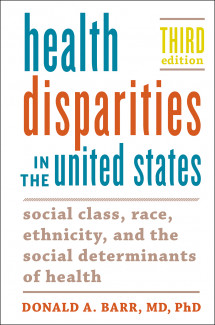
Johns Hopkins UniversityEst. 1876
America’s First Research University
Class Trumps Race as a Cause of Health Disparities

When we think about disparities in health status, it is common to view these inequities in terms of race. For example, we often look at infant mortality as an issue of race. In 2016, for every 1,000 babies born to black mothers in the United States, 11.4 died before their first birthday.[1] The comparable rate for non-Hispanic white infants was 4.9 deaths per 1,000, and 5.0 deaths for infants born to Hispanic mothers. A principal cause of infant mortality is low birth weight, often associated with the infant being born prematurely.
From these data it would be easy to conclude that black infants face twice the risk of death that white or Hispanic infants do. What, though, if the black mother was born and raised in Africa and then moved to the United States? A study of infants born in Illinois to white mothers or black mothers found that infants born to U.S.-born black mothers had, on average, a significantly lower birth weight than infants born to African-born black mothers.[2] The distribution of birth weight of infants born to African-born black mothers was nearly identical to that of infants born to white mothers.

Comparison of a series of measures of socioeconomic status showed stark differences between U.S.-born and African-born black mothers. Rates of teenage births, births to unmarried mothers and to high-school dropout mothers were all substantially higher among U.S.-born black mothers than among African-born black mothers or U.S.-born white mothers. Each is an independent risk factor for premature birth and associated infant mortality. As this study illustrates, infant mortality is principally a reflection of low social class rather than the race of the mother.
This association also applies to rising rates of deaths among adults. Between 2014 and 2017, the United States experienced successive declines in life expectancy. A principal cause of these declines has been rising death rates among middle-aged white men and women.[3] Over the same period, black and Hispanic adults of the same age had decreasing death rates. Among white adults, the highest death rates were found among those living in rural areas. Not all rural whites experienced rising death rates. These deaths occurred principally among whites with low levels of education – those with a high school education or less. There were two principal causes of these deaths among poorly educated, lower-income rural whites: suicide and opiate overdose.[4] These deaths are commonly referred to as “deaths of despair”, and reflect the growing stressors and challenges facing rural whites with low levels of education and low income.
Whether one looks at inequalities in infant mortality or adult death rates, what appear on the surface to be racial differences are, at their core, differences in social class and socioeconomic position. Infants born to poorly educated, teenage, unmarried black mothers are placed at a substantially higher risk of early mortality. Similarly, poorly educated, rural, middle-aged whites experience levels of despair that place them at substantially increased risk of death by both drug overdose and suicide. For both infant deaths and deaths of despair, class, not race, is the principal driver.
Donald A. Barr, MD, PhD, is a professor of pediatrics and (by courtesy) of education at Stanford University. He is the author of Health Disparities in the United States: Social Class, Race, Ethnicity, and the Social Determinants of Health, Third Edition, Introduction to U.S. Health Policy: The Organization, Financing, and Delivery of Health Care in America and Introduction to Biosocial Medicine: The Social, Psychological, and Biological Determinants of Human Behavior and Well-Being.

[1] Centers for Disease Control and Prevention. Infant Mortality Rates by Race and Ethnicity, 2016, available at https://www.cdc.gov/reproductivehealth/MaternalInfantHealth/InfantMortality.htm#chart, accessed 7/29/19
[2] David, R. J., and Collins, J. W. 1997. Differing birth weight among infants of U.S.-born blacks, African-born blacks, and U.S.-born whites. New England Journal of Medicine 337:1209–14.
[3] Case A, Deaton A. 2015. Rising morbidity and mortality in midlife among white non-Hispanic Americans in the 21st century. Proceedings of the National Academy of Sciences of the United States 112(49): 15078-83.
[4] Case A, Deaton A. 2017. Mortality and morbidity in the 21st century. Available at https://www.brookings.edu/wp-content/uploads/2017/03/6_casedeaton.pdf, accessed 7/3/18.


